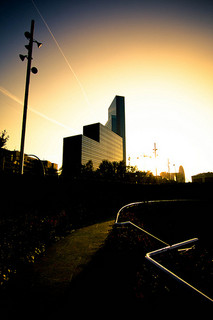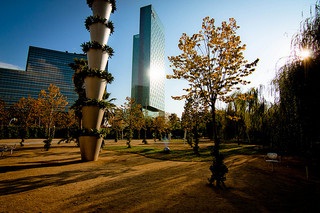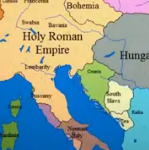Today’s Europe can be said to be a combination of tradition and modernity. What if tomorrow’s Europe became something completely new? What if it became completely creative?
They say that Rome wasn’t built in a day. And, of course, one or a few individuals alone cannot bring about any substantial social change. But now, in 2020, it is easy to see in retrospect that something extraordinary has been happening for at least in the past few years. By 2018, people from all over the European Union were reporting they could feel something in the streets, in the air, could see it in the faces of the youth walking to work wearing a bright smile. Something special was happening.

Art galleries displayed at the ground level, cultural events held regularly in town squares, tables strewn with updated photography magazines, cafes redesigned to a higher artistic ideal. Old and forgotten neighbourhoods had become popular homes of start-ups, and abandoned buildings were being sought by entrepreneurs where to establish small studios and offices. People were collaborating. Parks and playgrounds had again become meeting points for kids, teenagers, young adults, parents, and ladies with quaint greyish hair. They came, spoke, exchanged ideas, and left to explore their emergent new Europe with newfound knowledge. Bikes were being parked in front of doors, regardless of the place they gave entrance to. Cars, with their thick wheels, bulky frames and drifting smoke, had faded from the streets long ago.
The change was easy to see, but not so much to explain. A segment of the population had overtaken the other groups and subgroups in a short matter of time, and it continued to draw impressive hordes of new followers, as some might at first have said, converts. They were identifiable not by their age or looks, but by the revolutionary paradigm they had achieved. It was called simply “Creativity”. A creative class, as urban theorist Richard Florida had predicted for the United States, had risen spontaneously to take the reigns of Europe. They were marked originally by discontent with the established schemes and routines, inspiration to implement rather unorthodox solutions, and a surprising amount of proactive energy: for them it was trial, and error, and trial again, leading to the result they could more feel and envision than delineate.
The creative class first formed in the European capitals of diversity, including Amsterdam, Berlin and London. Openness and inclusiveness towards any people who did not exactly fit the established roles took hold. Tolerance, as Florida might have put it, came to be considered the essential component driving the flow of creative energy from one person to the next; and both at the individual and state level, people were eager to lend their support to the movement all throughout Europe. By the time the creative trend had made its way to the smaller cities, great changes were already arising.
One of the first objects of change was education. Despite notable differences across various systems, authorities all agreed on one fundamental principle: it was crucial that upcoming generations were given ample opportunity to start creating from an early age. Simply put, kids needed to be allowed to be kids: they had to attend lessons, of course, but moving, playing and doing became the critical means by which to replace the previous trends marked by children spending their time at home in front of the TV, without even the empathy to imagine that they were the Flintstones. They would become the workforce of tomorrow, and as such they needed to develop the creative capacity and persistence that would contribute to a culture regularly continuing to build upon itself.
In the adult world, the creative class brought technology into the limelight. More than ever before, it presented a way to improve the standard of living: from gadgets, to mobile apps, to productive processes. Ordinary citizens stepped forward to identify neglected needs, and then quickly organised themselves to launch start-ups that would produce projects that could combat these issues. Entire buildings called incubators were devoted to nurturing the fledgling projects, providing the support and warmth of a network of colleagues working toward improvements in the same sector; when the projects matured, they flew away on their own.
Sustainability was another issue the creative class tackled. Not only environmental matters were scrutinised, but also efficiency and ethical living. This meant that corporate social responsibility had to be taken seriously, social enterprises appropriately supported, and in daily life, people encouraged to take individual responsibility for making the Earth a better place to live in. To this end, recycling was the easiest option for families to undertake immediately, as well as increasing their use of public transportation, or non-contaminating modes such as bicycles or electric automobiles.

Little by little, cities started to flourish from the inside out. Luxurious buildings constructed prior to the financial crisis, which had become too expensive to maintain, were now being put to a different use. Especially in southern Europe, where the impact of the construction bubble had been harsh, these places served to satisfy the high demand of young professionals and businesses for co-working space. They became centres for the communication and coordination driving much of the process.
This society that embraced culture, education, tolerance and talent as the tools for building a better world was at the same time both the cause and the consequence of the appearance of the creative class. The past is preserved in the media and history books more clearly than ever before – having overcome many of its taboo issues, Europe can continue to work transparently and effectively, implementing steady changes aimed at fostering the world’s first truly creative society. As for the future? It is in our hands.
Cover Photo: Alex Fearn; CC BY-NC-ND 2.0 (Flickr)






